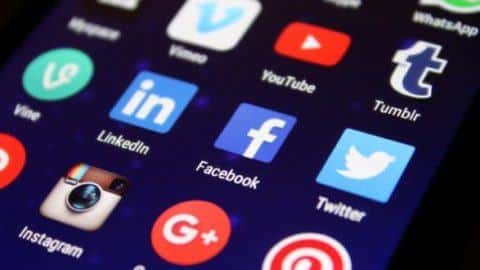Getting used to ‘the new normal’ was never going to be easy. If you’re like many senior managers around the world, you’ve got at least some level of discomfort with the whole work from home thing. But it’s time to get over the relationship you had with your team in the office – and perhaps with office culture altogether. Because to paraphrase one wise young poet, you and the office are never (ever ever) getting back together.
Still, that’s easier said than done. When you’ve spent your whole career practicing a particular leadership style, or learned that there’s one ‘good’ way to manage, you might find it hard to do things differently. It’s just uncomfortable.
On the pro-office side of the fence, commentators range from gentle questioning around productivity and culture, to open hostility for ‘lazy’ workers. The good news is that the overwhelming majority of data so far supports remote work. The stats demonstrate that remote work has benefits for both individual and organisational productivity. And these aren’t just subjective numbers collected since the pandemic either:
- One of the most commonly cited studies on working from home, from 2013, showed a 13% performance increase for remote employees 1.
- More recently (December 2021) and closer to home, Swinburne Uni researchers found home-based workers were around 20% more productive than office-based workers 2.
- Another study published in October 2021 found that flexible (remote optional) workers feel better rested, more engaged, and have a higher sense of wellbeing than their office-based counterparts 3
- A survey of Australia’s 50 largest companies revealed that most expect employees to continue to work at least part of the week from home once the pandemic is over (whenever that might be)4.
So if you know that working from anywhere is at least inevitable, if not a great thing, why do you still feel anxious about it?
The thing is, it’s not about having enough data on productivity and wellbeing. Or enough software and tools. It’s about relationships; the way you connect with other individuals at work, and to your team as a community. That’s why you can learn a thing or two about remote team management from a potentially unexpected source: relationship experts.
From Bumble to the boardroom, here are a few takeaways you might be able to apply to your own working life.
Lesson 1: Attachment styles
Adult attachment theory is an area of psychology that attempts to describe, explain and classify the way people relate to others 5.
It’s trending now thanks to behavioural scientists like Logan Ury (How to Not Die Alone) who use it to frame and discuss dating and romantic relationships.
There are four attachment ‘styles’: secure, avoidant, fearful-avoidant (also called disorganised), and anxious. Secure attachment types (around 56% of adults6), for example, are comfortable depending on others, and having others depend on them. They find it easy to trust others, and to get close to them. The other three are insecure attachment types. They may struggle with things from communication to closed-mindedness.
Insecure attachment doesn’t just show up in the form of clingy partners or serial ghosters. It’s also a part of work team relationships.
If you find it hard to delegate tasks (and trust that the work will get done), need constant contact with your team, or assume the worst in people, you may have some attachment issues going on. Either way, the first step to fixing this is to get to know your own attachment style7.
Lesson 2: Negotiating boundaries
Psychologist and bestselling author Esther Perel is best known for her work on marriage, sexuality and eroticism. Her international bestseller is about “the intricacies behind modern relationships, and the dichotomy of domesticity and sexual desire”. Not exactly something you’d think would have to do with office life. In fact, just mentioning some of those words in front of an HR officer is enough to raise the blood pressure. But part of Perel’s teachings is about how to construct and enforce healthy boundaries in these domestic relationships. And it’s these principles that can be (and have been) applied to work relationships.
Perel says that when needs change, people need to “create new boundaries and dissolve those that no longer serve us” 8. A boundary here is defined as what’s OK versus what’s not OK, and also as the line between different roles and dynamics. For example, the way someone relates as a parent versus as a partner or a (*Carrie Bradshaw voice*) lover is very different, but blurred lines can make it hard to make the most of each relationship. In the age of working from home, “the mute button has become the last boundary”.
If you’ve been feeling like you’re not particularly effective in your work roles since starting to work remotely, you might want to look into the boundaries that exist in both your life and personal life. It might be time for some resets. Perel discusses a few different approaches to this. A lot of her content is free to access online. Check out her recent TED Salon talk on routines, rituals and boundaries in the work from home age, and her new podcast on work relationships.
Lesson 3: Vulnerability
We’ve been dealing with COVID-19 for nearly two years now. Yet for some, things haven’t progressed very far from those early days of trying to recreate the office experience remotely. There’s still tension. Everybody’s still talking about what the new normal should actually look like. It’s pretty clear that trying to transpose the office experience to a digital environment just doesn’t really work. And there’s often only one way out of this kind of rut: having awkward conversations.
Social worker, researcher and storyteller Brené Brown is famous for her work on vulnerability and courage9.
She often explores how “vulnerability is the birthplace of innovation, creativity and change” 10. In other words, vulnerability is an act of courage that’s required to change the status quo. But being vulnerable means facing your shame, fear and anxiety. It’s easy to see how this applies to work situations as well. Most people have at least some fear around what could happen if we rock the boat, look needy, or seem weak in any way (especially as a leader).
If you feel like you’ve been stuck in a rut with a way of working that, well, isn’t working, it may be worth looking into what’s stopping you from starting those awkward conversations. One of Brown’s tips is to find gradual, gentle ways to engage the other party. So maybe a subtle DM slide is in order after all…
Love and relationship experts can help you think differently about the challenges of leading teams in a virtual workspace. But there’s a lot more to get your head around – both conceptual and technical.
Ready to learn more about leadership and HR from a fresh perspective? Join a great community of learners and industry veterans at Monarch Institute. Our nationally accredited courses are consistently ranked highly for great student experience and outcomes.
To find out which Diploma or Advanced Diploma might be right for you, get in touch with one of our friendly Course Consultants today.
Footnotes
- Bloom et al., ‘Does Working from Home Work? Evidence from a Chinese Experiment’ National Bureau of Economic Research Working Papers.
- ‘Hybrid working 2.0: Humanising the office’ Centre for the New Workforce, Swinburne University.
- ‘Flexible working and psychosocial safety (Summary report)’ Centre for Work Health and Safety (with university partners) (https://www.nsw.gov.au/customer-service/news-and-events/research-finds-higher-wellbeing-for-flexible-workers).
- Emma Koehn and Jessica Irvine, ‘The five-day office week is dead, long live the hybrid model, says productivity boss’ The Sydney Morning Herald (https://www.smh.com.au/business/companies/the-five-day-office-week-is-dead-long-live-the-hybrid-model-says-productivity-boss-20210706-p587d4.html) .
- Learn more about attachment styles in the workplace at The Attachment Project: https://www.attachmentproject.com/blog/attachment-in-the-workplace/.
- Hazan and Shaver, ‘Romantic Love Conceptualized as an Attachment Process’ Journal of Personality and Social Psychology (1987, Vol. 52, No. 3, 511-524).
- Free quizzes derived from clinical question sets are available at https://quiz.attachmentproject.com/ and other sites by searching ‘attachment style quiz’..
- https://www.estherperel.com/blog/letters-from-esther-9
- See her most-watched talk (56 million+ views) here: (https://www.ted.com/talks/brene_brown_the_power_of_vulnerability) .
- https://www.ted.com/talks/brene_brown_listening_to_shame.





